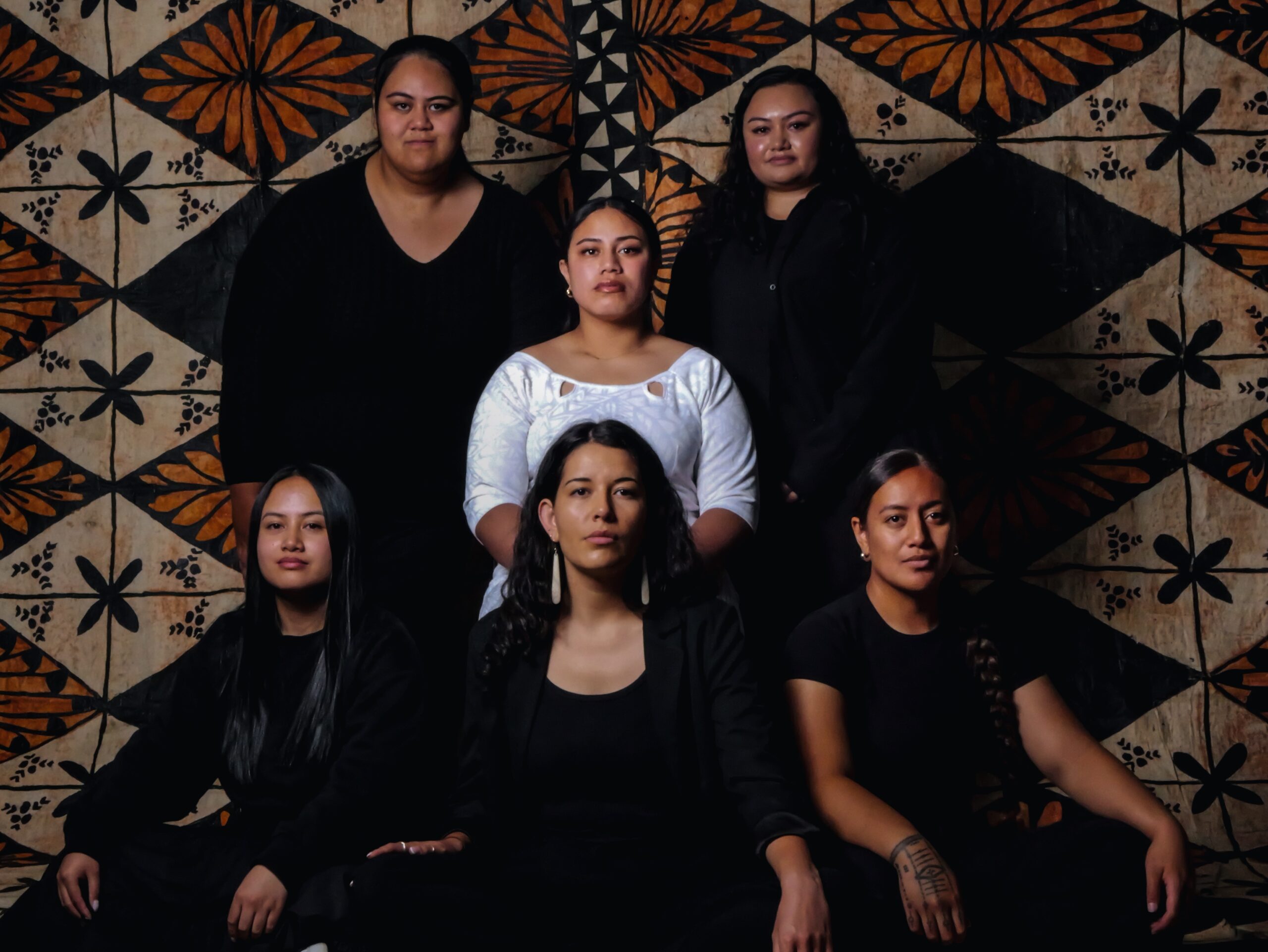Spoilers ahead! This review will discuss elements of the show that could be considered spoilers. You have been warned.
I arrived early and searched for a seat to perch on while sipping on a generous glass of Marlborough Savvy B’ (Sauvignon Blanc). Scanning the crowd, which was already spilling out from the Basement bar to the courtyard, I realised that I would have to bravely introduce myself to a table of strangers if I wanted to find one. So, I gulped down my social anxiety and said, “Hi,” to a particularly friendly looking girlsquad. They embraced me with warm smiles and instructed me to “Come sit girl!” Little did I know, I had chosen none other than the real-world best friends of Koroseta’s creator Lealofitaute Vaai to soak up the second-hand pre-show jitters with.
As the time crept dangerously close to 6.30 pm, a conscientious bartender gently suggested that the audience-to-be made their way upstairs. We entered an otherworldly portal to Vaai’s devised work. Basement’s familiarly steep, tunnel-like staircase led us all to the reason we paid $12.00 to park in the city for one hour. A fantastical mural and fuchsia lighting signalled me to curtail my gossip sesh with my new pals. Ready or not, I needed to mentally prepare for an unsettling resurrection of emotions that many of us bury.
Koroseta told the story of a Samoan daughter wayfinding through grief. With her best friend always knocking on her door wondering what’s up, her mum reminding her of the chores she hasn’t completed yet, and her phone relentlessly notifying her that she is misunderstood by her peers, Koroseta remained aloof. Mind elsewhere. As she daydreamed about her late sister, Koroseta’s navigation through heartbreaking loss was revealed in song, siva and spoken word.
Violin strings pulled at my memories of lost loved ones during this intimate portrayal of Koroseta’s life after her sister’s death. The music was harrowing. Agonising. And utterly beautiful. A small but mighty orchestra emphasised the haunting drama that ensued onstage. But they didn’t just play the classics. In fact, they played everything from Billie Eilish to The Five Stars. Listening to these orchestral renditions of TikTok hits and Samoan love songs was a surprising, poignant way to be guided through the undulating mood of the show.
“The whole audience erupted in laughter that took me back to standing in my aunty’s kitchen, lovingly slapping my cousin’s shoulder for saying something cheeky that I wasn’t allowed to repeat.”
Despite sorrowful appearances, Koroseta wasn’t all gloom. Somehow, the tension broke right before I started wailing every time. Skilfully scripted banter brought temporary relief when the sadness of Koroseta’s malaga was almost too much to bear. Then the whole audience erupted in laughter that took me back to standing in my aunty’s kitchen, lovingly slapping my cousin’s shoulder for saying something cheeky that I wasn’t allowed to repeat. Deeply comforted by crack-up yarns between Koroseta and her best friend, my bottom lip steadied as the next set of heavy waves rolled in.
After her sister’s funeral, Koroseta appeared to exist in a reality that was separate from the one everyone else returned to. Untethered from her community, she was left to observe as they continued dancing to music that she could no longer hear. Automated, dutiful responses like kissing one-thousand cheeks and monotonously offering cups of tea to innumerable relatives, were swiftly replaced with complete withdrawal. Minimal lighting accentuated Koroseta’s disorientation. Once the last guest had been farewelled, life carried on and Koroseta despaired in the gaping silence of a world that was rendered unrecognisable; incomplete.
Koroseta’s story characterised the tenderness of Samoan alofa, the backbreaking pressure of unwavering social expectations and the ice-cold consequences that some Samoan daughters face for not meeting them. Vaai ensured that the audience noticed the disapproving whispers and raised eyebrows that tormented Koroseta in her darkest hour. The people closest to Koroseta could not perceive the black hole she was swimming in, but the audience could. We heard her longing for her dead sister—searching for a way to keep drawing breath without knowing why. Poetry pelting the stage like the real tears that streamed down the faces of the cast. A sombre falsetto softening each blow. As the audience uncovered Koroseta’s invisible wounds, my mind wandered to those that many of us carry beneath our own thick skin.
This was undoubtedly the first time I attended a Samoan funeral at a theatre. Despite feeling nervous to unearth my own grief in public, my eyes swelled with pride as I witnessed the innermost aspects of my culture playing out onstage. Vaai and her multi-talented cast celebrated us in all of our complicated layers of joy and pain. While she highlighted the beauty of entrenched Samoan cultural customs, she also confronted the conflict between service and self; personal needs and communal needs; responsibilities that seem to exist in direct opposition. Vaai’s masterful storytelling wove everyone in that room together. Whether I was cackling or crying, I was captivated by her unfaltering honesty.
It’s no wonder that tickets to Koroseta are hard to come by. Immediately after opening night, I asked if I could go again. But every show was SOLD OUT! You best believe I will be first in line for whatever Vaai creates next. Watch. This. Space.
Featured photo supplied.



